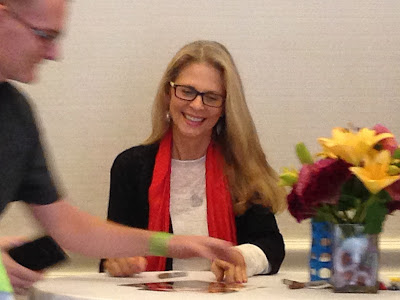Much has been said in recent months about the Confederate flag that sits atop the General Lee car on "The Dukes of Hazzard." We were delighted, however, to read these words from Gy Waldron, the creator of the beloved 1980s TV series. Mr. Waldron is kind enough to let us reprint them here ...
Waldron is still at his writing craft, by the way. He has written a book, a romantic thriller called "Twist of Time." See GyWaldron.com to learn more.
......................................
The General Lee
My grandfather, Franklin, of whom Uncle Jesse
was based, said, “Never debate with one whom you must first educate;
you’ll both lose.”
The discussion about the Confederate flag is
impassioned and acrimonious, and I don’t want to heighten the tension or
offend, defend, preach or justify.
Growing up in the South, I had an experience with the Confederate flag
that perhaps those who reside outside the South may not understand.
Family, friends, neighbors and local business owners had no attachment
to racism or white supremacy, but many – most – did fly the flag from
their porches. Seeing the flag flying was ordinary and uneventful yet
seeped in culture. It represented not slavery nor racism, but Southern
heritage—much like sweet tea, cobbler, playing country music on the back
porch, or multiple dialects. It was unique to its setting, found almost
everywhere, and most definitely not a symbol of racism.
To have
it placed on the roof of the General Lee was not politically profound;
it defined the culture of Hazzard County, which had nothing to do with
racial superiority. And while “Southern lifestyle” is entangled with
controversial definitions, the one referred to here crosses racial
lines—I shared this experience with black and white friends throughout
my lifetime.
My family history is entangled; two brothers fought
on opposite sides of the Civil War and my great, great grandfather,
Anthony McGill, owned slaves. One year before the war started, McGill
became a Baptist Abolitionist, and as such, no longer had slaves under
the dictates of his faith. Two of the then former slaves moved north,
while another two, a couple, chose to stay on the plantation with
McGill. They were sharecroppers, the first in the county, and were
buried in our family graveyard after a long life of farming with my
family. Generations later, we were active in the Civil Rights movement.
None of this is to mark my place with a particular opinion. I’m laying
out my experience, not for an expiation of wrongdoing, because I am not
a racist; it is merely to establish discourse and personal clarity. I
hope you’ll join me in conversation and help deepen my understanding of
all angles and thoughts on the matter.
--Gy


















